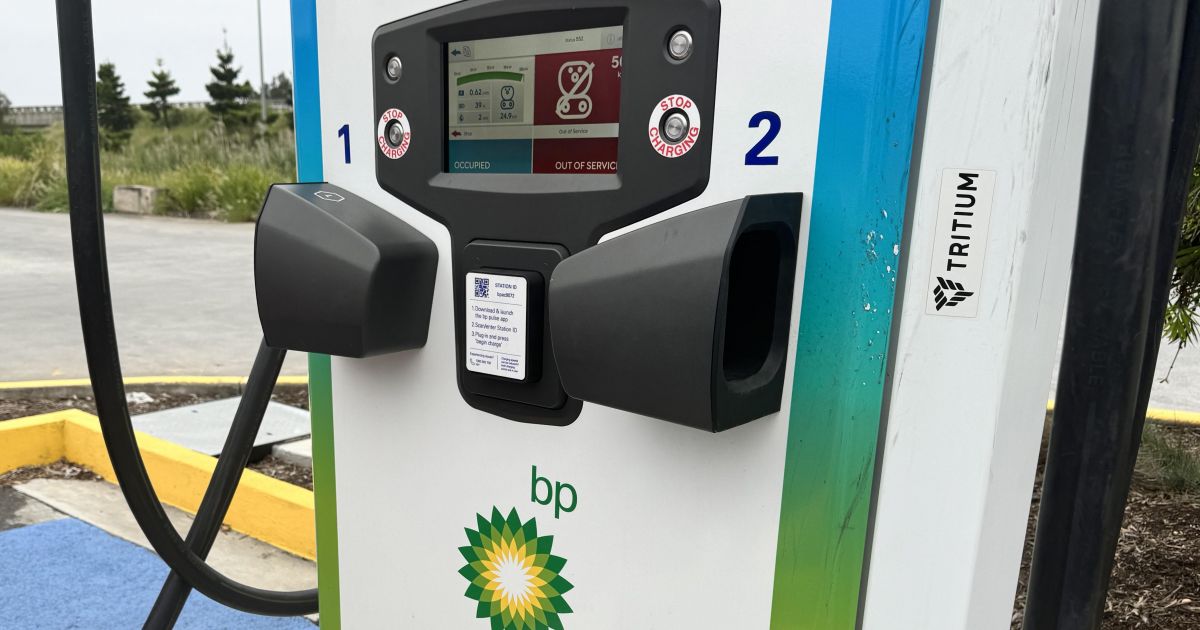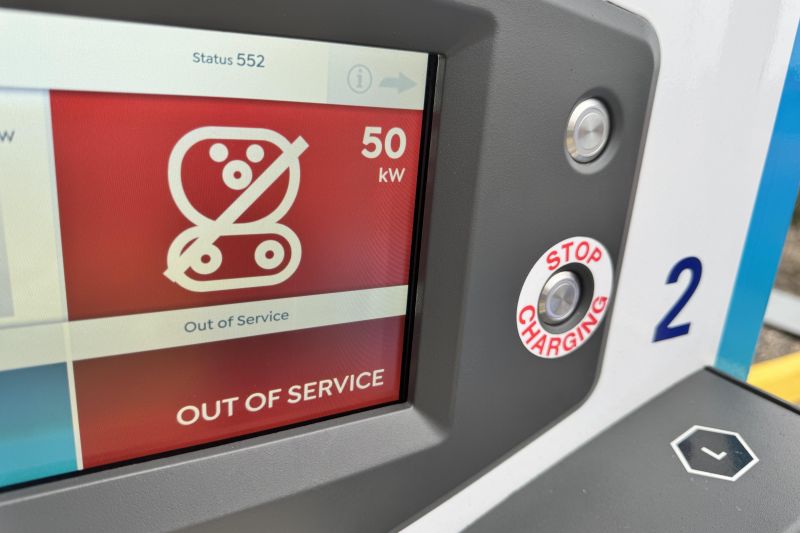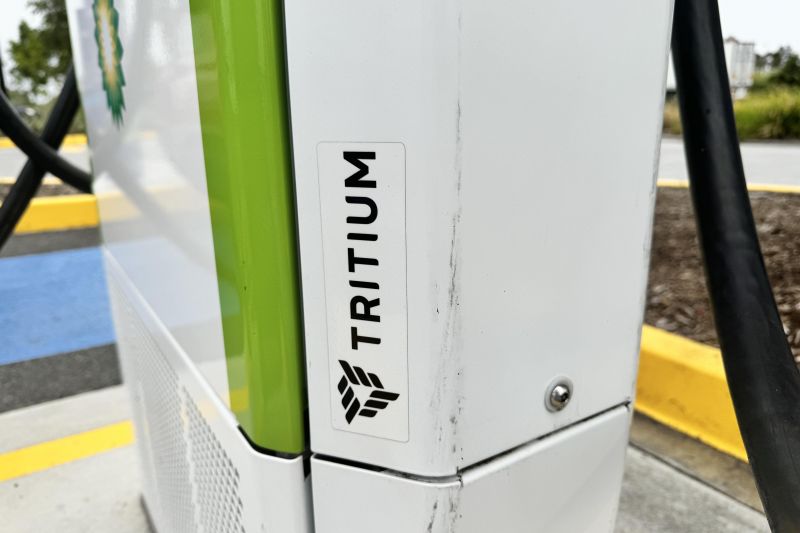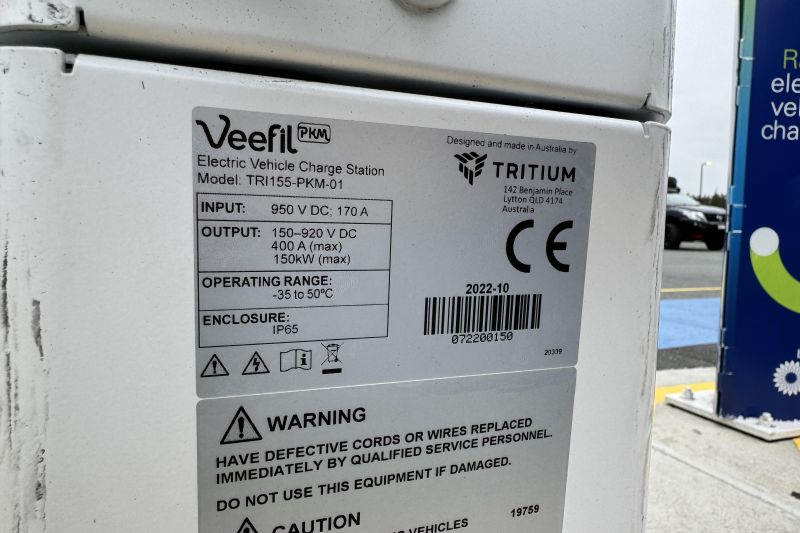[ad_1]
Former workers of Brisbane-based electrical car (EV) charger producer Tritium have shared their experiences working on the firm, shedding mild on its mismanagement and the standard of its merchandise.
For individuals who have arrived at a public electrical car charging station and seen ‘faulted’ or ‘out of order’ discover on one (if not all) the chargers, chances are high excessive it’s a Tritium charging unit.
Tritium had been certainly one of Australia’s success tales of the last decade, with its chargers deployed all around the world and utilized by manufacturers equivalent to Tesla, BMW, Mercedes-Benz, Chargefox and plenty of others.
The corporate’s present monetary and enterprise points have been effectively documented – as soon as valued at over US$2 billion (A$3 billion) on the Nasdaq, it’s now value a bit over US$25 million (A$38 million).
Tritium is now combating for survival amid a collection of points together with the standard of its product, and its capability to offer ongoing guarantee.
The corporate is at the moment in negotiations to seek out exterior capital after the state and federal governments refused handy over taxpayer funds to maintain it afloat – regardless of already tipping tens of millions into the corporate over the previous few years.
With the Brisbane manufacturing facility closed for good and Nasdaq hitting the enterprise with a show-cause discover late final yr about its underperformance (relevant to corporations with a share worth of below US$1 for greater than 30 consecutive days), CarExpert has been in contact with quite a few ex-Tritium workers to seek out out what went mistaken.
“There have been quite a lot of design flaws [in the chargers] that had been principally ignored. Individuals on the high refused to make the required modifications,” one former worker informed CarExpert on the situation of anonymity.
“I cherished the corporate and the profession development alternatives that had been at hand, nevertheless it wasn’t too lengthy till I began to note the corporate was shedding its spark resulting from dangerous administration.
“Nobody needed to take accountability when issues went mistaken however quite performed the blame recreation. Points had been by no means resolved due to that.”
We’ve reached out to Tritium, however have but to obtain remark.
Tritium had been some extent of satisfaction for Australia abroad with even the likes of Prime Minister Anthony Albanese mentioning the producer as a neighborhood instance of innovation and success as not too long ago as October final yr.
CarExpert interviewed Tritium chief government Jane Hunter in 2020. On the time the corporate had deployed greater than 4500 charging stations and offered over 600,000 classes in additional than 33 nations. It claimed to carry round 50 per cent share of the world-leading marketplace for DC chargers in Norway, and round 15 per cent of the broader international market.
So how did an organization in such a seemingly dominant place have such a spectacular fall from grace?
“New workers weren’t being skilled correctly to do the job on the meeting line. That resulted in quite a lot of errors, which set them again,” one other former worker informed CarExpert.
“Additionally they uncared for client suggestions and had been very reluctant to make mandatory modifications to please the patron.
“After they began shedding prospects and contracts, the panic started, and so they began to eliminate workers with little or no discover… I had excessive hopes for the corporate and needed to be a part of their success.”
Although Tritium posted US$185 million (A$280 million) in income for the 2023 monetary yr, which was greater than double its efficiency for the yr earlier than, it has been operating at a constant loss since going public.
At one stage final yr, Tritium reportedly requested for presidency help to the tune of $90 million as a money for fairness injection, or a $30 million funding to maintain its Brisbane manufacturing facility open. Each requests had been seemingly denied.
Since March 2020 Tritium has been led by Ms Hunter, who was beforehand the chief working officer of Boeing Methods Evaluation Laboratory (a part of the Boeing Phantom Works), additionally based mostly in Brisbane.
Because it went public in March 2021, the corporate’s share worth has fallen from over US$10 to US$0.14 right now, a decline in valuation of greater than 98 per cent.
Considered one of Tritium’s largest shareholders, billionaire Brian Flannery whose shares fell from nearly $140m in valuation in 2021 to round $2 million right now, informed the Australian Monetary Assessment in November final yr that the corporate had not made the precise calls to scale back prices.
“The present administrators have let it go too far and watched the margins disappear,” he informed the AFR.
Former workers concurred with that evaluation, with one calling out the rotating door of high-ranking officers at Tritium a purple flag.
“The problem was inside. Firm administrators would both give up or get fired,” one worker informed CarExpert.
“There are folks throughout the firm accountable for the dysfunction. Those with good intentions had little energy and couldn’t do something however hand over.
“There have been too many egos throughout the firm. They wanted to filter that out for higher progress.”
With the price of electrical car charging infrastructure partially funded by the taxpayer in Australia, Tritium’s fall from grace is a bitter tablet to swallow not only for present and future electrical automobile house owners, however for the way forward for expertise manufacturing within the nation as entire.
[ad_2]




